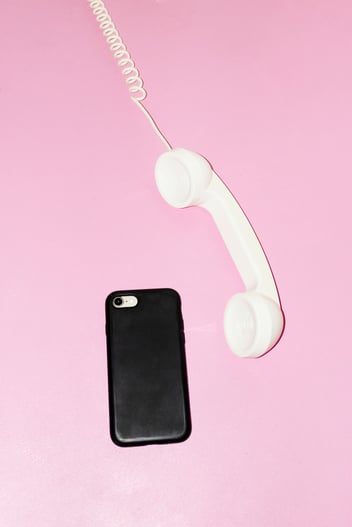According to research, Finns use mobile devices for around 4.5 hours every day and the rise in use this represents has increased universally across different age groups. And yet, a study conducted by the US-based research institute, the Standish Group, notes that up to 67% of all IT projects flop. In this blog, I’m going to give you some practical tips for successfully commercializing an idea for an app.
When you set about developing a mobile app with the intention of creating added value for a business process, your digital product design needs to have a demonstrable benefit or an aspect that the user enjoys. The app’s content must be original, have its own distinct flavor or character, and provide a solution to a problem in the user's life that they are prepared to pay for. On top of this, the app must stand out from the crowd in order to spark the interest of the consumer and commit them to repeated use.

The 7-second rule
An app’s first impression is crucial to its success and is locked in within the first seven seconds of a user coming into contact with the app. This represents a tiny window of opportunity for the user to have a positive experience. In other words, for the app to succeed the user needs to find what they were looking for and be able to use the app without a hitch. The impactful moment of getting hands-on with an app for the first time must be communicated to potential users through an app store’s front page, with some epic screenshots, captions, and videos. The true value of an app is created through the benefits it offers the user, which need to be such that its competitors are yet to commercialize in a mobile form.
It’s vital to answer the following questions during the ideation phase of the app design:
- Who is the app’s target audience?
- How well does the app meet the unique needs of the intended users?
- How does it stand out from similar apps
- What is the app’s USP? (Unique selling proposition)
- Why should customers choose your app over others?
- How do you ensure your app creates a killer first impression?
A successful mobile app is not based on assumptions
On top of some fancy coding and easy-on-the-eye graphical elements, any app development project needs a stand-out product concept. After all, the biggest risk in this business is developing a product on misplaced or inaccurate foundations. It’s far too tempting to rush into making an app that you the developer would like to use or one that your family and friends might enjoy.
Designing for oneself and one's own use is one of the biggest sins in the IT industry. Another fatal assumption is that the app is inherently valuable or that it’s worth making because a competitor already has done so. This was the subject of one of our previous blogs: Mobile apps for business – do we really need the same as our competitor? While it’s true that all development ideas are based on one assumption or another, identifying and questioning any default suppositions is key to getting an app concept off the ground before the actual development work kicks in.
Peeling away the layers of assumptions
Within the very first steps of any app development project, it’s a good idea to invest time and energy into peeling back the layers of any assumptions the team has, discussing who the actual users of the app will be, identifying any relevant stakeholders, and working out how well the core assumptions play out in the real world.
A great example of this is the parking garages and automated meters operated by Finnpark, who wanted to create a problem-free parking experience for drivers with the help of the Moovy app. Before any concrete development work got underway, we carried out a comprehensive preliminary study that included close collaboration with consumers in various workshops, ideating sessions, and planning meetings. We also monitored consumer behavior in the parking garages and other car parking sites from the perspectives of both the current and new model and questioned every aspect of this insight.
The best product concept stems from the intersection of different perspectives, ensuring that every euro invested is accountable, goes where it’s needed, and provides both value for money and adds value to the digital investment.
What next?
Once the mobile app design process and background work are sufficiently far along, the preliminary findings lead to a better understanding of the requirements regarding the functionality of the app and its user environment, intended usage, and visual appearance, and this leads to the next step – choosing the right technologies.
Contact us to discuss how to make your next mobile app a success.

Vincit,
Vincit community


